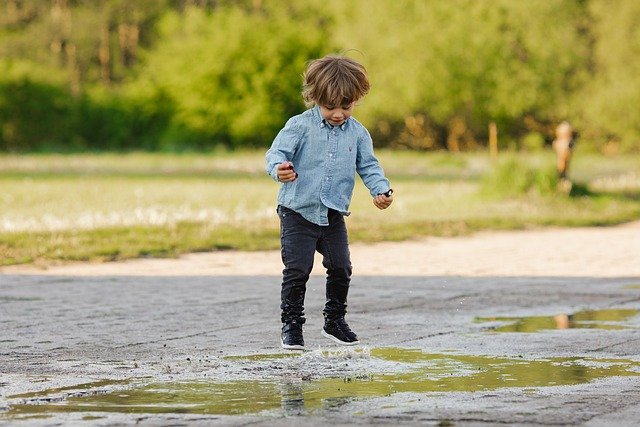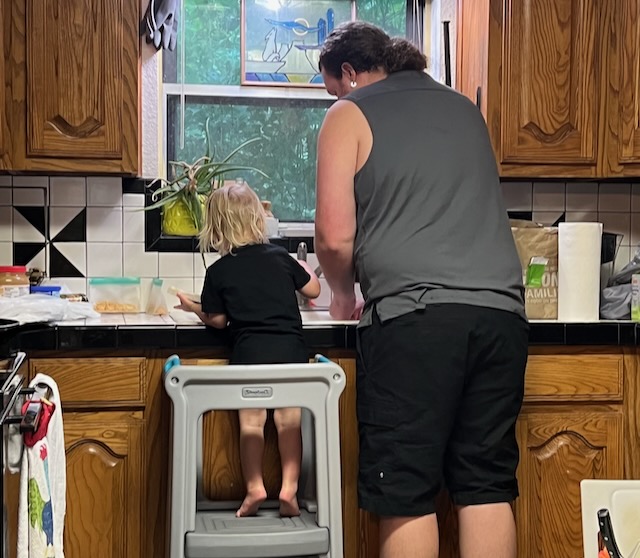We find ourselves bursting at the seams in the infant room (and rapidly filling in the toddler room). Like many unexpected and negative events, the pandemic has led to a baby boom. When prospective parents call inquiring about a spot for their newborn (or soon to be newborn) and we inform them they can get on our toddler room waiting list for 2023 the shock tends to be palpable. But one nice thing about these booms (which we saw after 9/11 as well) is that it gives us an opportunity to focus messaging and education efforts in certain areas. One of those areas of focus is helping new parents understand some things they can be doing to ensure their child is getting the most developmentally speaking during some very weird times. What follows are some themes to follow with regard to what you can do with your infants and toddlers during specific developmental timeframes. These are themes and not in-depth examples because, honestly, each of these can fill a fairly lengthy document on their own.
1- 4 Months
Young babies respond wonderfully to soft voices, rhythm and music. Humm or sing as you spend time with your 1-4 month old. Play soft music that features changes in pitch, meter, and verbal emphasis. Of equal importance is ensuring your 1-4 month old sees your face when interacting. Do more than simply smile. Annunciating words, repeating their name, and changing the pace and tone of your voice is very useful developmentally.
4 – 8 Months
Talking continues to be incredibly important. When you aren’t in touching distance of your baby and they aren’t going down for a nap or the night in their own space, let them hear your voice. This helps build trust and also tells them what you are doing. Singing is also a good bet at this age. Moving around your child as you sing and talk encourages them to follow you with their eyes and their body. Watch for the use of the sign language we teach infants starting later in this age range and respond to requests.
8 – 12 Months
This is the time when you can easily introduce simple directions as your baby will have picked up many words from listening to you. When your child is particularly active, turn off distractions (phone, TV, radio) and spend one on one time while using your voice clearly. Physical activity is all the rage at this age – so everything that encourages it (clapping, crawling, standing, walking) is fun and fair.
12 – 16 Months
Spending quiet time remains important at this age. Ensure you are using your voice more than ever. Since your child can follow you almost everywhere at this point chatting through everything from cooking, to cleaning, to exercise time is wonderful. Books and pictures go from introducing new things at early ages to being objects of utter fascination at this age. Keep plenty around – your child will let you know their favorites. You will be getting words back at this point. Simple directions allow your child to be a big help.
16 – 20 Months
The fun and games are at full tilt by this age. Everything from traditional animal noises, to using new words, to word association games, to children singing along to the simplest songs makes the payoff from your earlier voice usage very apparent. Don’t limit your child to just their toys at this point. The world of adult items is equally interesting (if not more so). Before you throw anything away or before you lock up the “safe” cabinets see how your child responds. Everything from dishtowels to cooking pots and from luggage to (clean) Swiffer dusters is fair game for play.
20 – 24 Months
Just because you tell them to do something at this age doesn’t mean they will. They probably won’t. They are fully mobile and as curious as they will ever be in their lives, but they possess no self-control and don’t understand how their actions might harm others. Rather than throwing your arms up when they say no, just ensure you are providing opportunities for them to engage and learn. Everything from more complex books to puppets make excellent fodder for learning. Ensure they get out and about for some free exploration as well. Whether at a park. the arboretum, or your own backyard – they will be happy when they are allowed to poke and prod without hearing no. Our favorite part – they are fully able to engage with music at this age – singing, humming, dancing and clapping. Keep some tunes handy and watch them go.
If you want more ideas remember that your child’s teacher is always in easy reach. Our teachers are professionals with years of experience and specialized training. They are always willing to share what they know about your favorite person.





